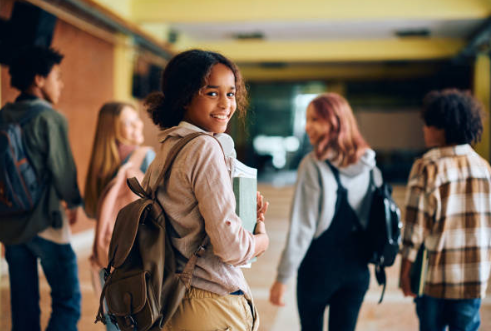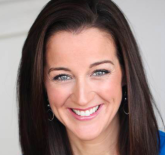10 Ways to Build Inclusive Activity Programs for Newcomers

Previously published in Volume 82, Issue 2
As images of the Syrian refugee crisis continue to frequent our news channels, it’s becoming increasingly important to consider how we are supporting immigrant and newcomer children and youth in our schools.
While the most pressing conversations center on individuals’ basic needs such as food, shelter and safety, it’s also worth giving thought to how we can best integrate immigrant and newcomer children and youth into physically active and healthy school, recreation and sport settings.
Obesity trends among newcomers
Interestingly—and disturbingly—although most immigrants arrive in Canada less obese than people born in Canada, after a certain amount of time they become more obese than Canadian-born individuals. Known as the immigrant effect, this outcome is due to a variety of factors such as higher rates of poverty as well as working longer hours and balancing more jobs than the average Canadian citizen. With this in mind, it is imperative that immigrant and newcomer children and youth, like other children and youth in Canada, are educated on how to live healthy lives. Armed with this knowledge, they are best prepared to live at a healthy weight and gain the many physical, social and emotional health benefits of physically active living.
While both students born in Canada and outside of Canada deserve to be educated on how to develop as healthy and physically literate individuals, there are different considerations for each group when it comes to creating a safe space. As the old saying goes, treating everyone equally is not necessarily treating everyone fairly.
Creating welcoming activity spaces
If you teach, coach or deliver physical activity programs to immigrant and newcomer youth, consider the following suggestions for creating warm and inclusive physical activity spaces.
1. Understand how diverse newcomer and immigrant families are
While some families freely leave their native land because they want to come to North America for potential education and/or employment opportunities, others leave their home countries reluctantly to escape such things as war, poverty or oppressive dictatorships. Additionally, some families want their children to assimilate to North American cultures quickly while others would like to assimilate without losing what is traditional and valued in their own culture. Understanding such differences exist and positively and effectively communicating with the immigrant and newcomer families in your community are critical elements for providing a welcoming environment for all.
2. Work with trust channels
Find a trusted partner who can help you reach potential newcomer or immigrant youth who might like to join your physical activity program. This trusted person of the newcomer population in your area might be a religious leader or a native of the same country as students in your school, or she/he may be a long-time advocate for newcomer Canadians. The key is to work with this person to answer any questions concerned parents or guardians may have.
3. Translate messages
Use language software or have a community member translate emails, posters or websites into the languages that represent the people within your community. Note that students may be the best translators in the community. It is important that any fears, concerns and questions are answered to avoid assumptions that could decrease participation. Effectively communicating with parents who may not speak English can present a challenge, but it will more than likely result in an increase in participation.
4. Dress
Work with sport governing associations to ensure that all potential members of a community feel welcomed to participate. For example, a turban should not have to be removed for a sporting match.
5. Weave culture into lessons, practices and programs
If possible, present modified versions of activities popular in native countries, words or stories from sport in native countries and invite children and youth to share their favorite forms of movement, or their parents, so that all participants can learn more about the cultures within the group. Invite Canadian-born participants to share information on their families’ cultures and customs as well.
6. Explore your own biases (Culp, 2013)
You should not bring your own biases to the planning, implementation or the evaluation phases of a program. Take time to consider any biases you might have early on in the planning process and continue to reflect on potential biases throughout the program delivered. Engage culturally diverse facilitators in addition to yourself who can assist you with making programs culturally sensitive (Physical and Health Education Canada, We Belong, 2016).
7. Financial constraints
Many families come to Canada with little resources and paying for sport registrations or field trips can exclude newcomer and immigrant youth immediately. Work with schools, local grant agencies and non-profits to help eliminate associated costs as a barrier to participation. (Stanec, Bhalla, & Mandigo, 2016).
8. Girls’ and young women’s roles in society and families
It is important to understand how girls and young women are viewed in many countries. Birth order may also contribute to the increased challenges in having immigrant and newcomer girls and young women participate in physical activity programs and this may impact the decisions on when to hold practices or after-school physical activity programs. Help ease parents’ concerns through communication (see #2) and accommodate whenever it is possible to do so.
9. Build community among the class, team or group
Establishing a warm learning community is simply good pedagogy. However, it can be even more important when working with newcomer and immigrant youth. When all members feel valued and safe, participants will be more motivated to engage.
10. View this article as a just starting point
These tips are brief and the list is far from exhaustive. Consider the following resources for further reading:
-
If you are considering a program for newcomer and immigrant children and youth, check out PHE Canada’s We Belong! Resource guide.
-
Social Justice in Physical Education: Critical Reflections and Pedagogies for Change is a recently published textbook focused on social justice in physical education (Robinson & Randall, 2016), and includes a chapter on immigrant and newcomer students in physical education (Stanec, Bhalla & Mandigo, 2016).
-
Be sure to familiarize yourself with the work of Dr. Brian Culp, who has done extensive work in the area of culturally responsive physical education. (http://culturenmotion.org)
Helping new Canadians lead optimal, healthy lives
My mom came to Canada, from Europe, as a young child. Her parents didn’t speak English and she told me stories of being teased as a young child for being different. In her time, it wasn’t acceptable to celebrate one’s native country and culture when you arrived in Canada.
Much has changed since that time. I know I, like many of you, are proud of how Canada is now perceived within the global community. It is my hope that we collaborate and celebrate the uniqueness of each student, athlete and participant, and how it benefits the entire country. As we strive for this goal, we must do so while focused on providing quality education on how to live an optimal life—indeed, a healthy life.
References
Canadian Multiculturalism: An Inclusive Citizenship (2016, June 2). Retrieved from http://www.cic.gc.ca/english/multiculturalism/citizenship.asp
Culp, B. O., (2013). Pedagogy: Beginning Guide to Meeting the Needs of Diverse Learners in Physical Activity (2016, June 2). Retrieved from www.culturenmotion.org
Physical and Health Education Canada: We Belong (2016, June 2). Retrieved from http://www.phecanada.ca/resources/we-belong
Robinson, D. B. & Randall, L. (2016). Social Justice in Physical Education: Critical Reflections and Pedagogies for Change. D. B. Robinson & L. Randall (Eds.). Toronto, ON: Canadian Scholars Press.
Stanec, A., Bhalla, J., & Mandigo, J. (20016). Exploring the issues faced by immigrant students in physical education. In D. B. Robinson & L. Randall (Eds.), Social Justice in Physical Education: Critical Reflections and Pedagogies for Change. 248-270. Toronto, ON: Canadian Scholars Press.








